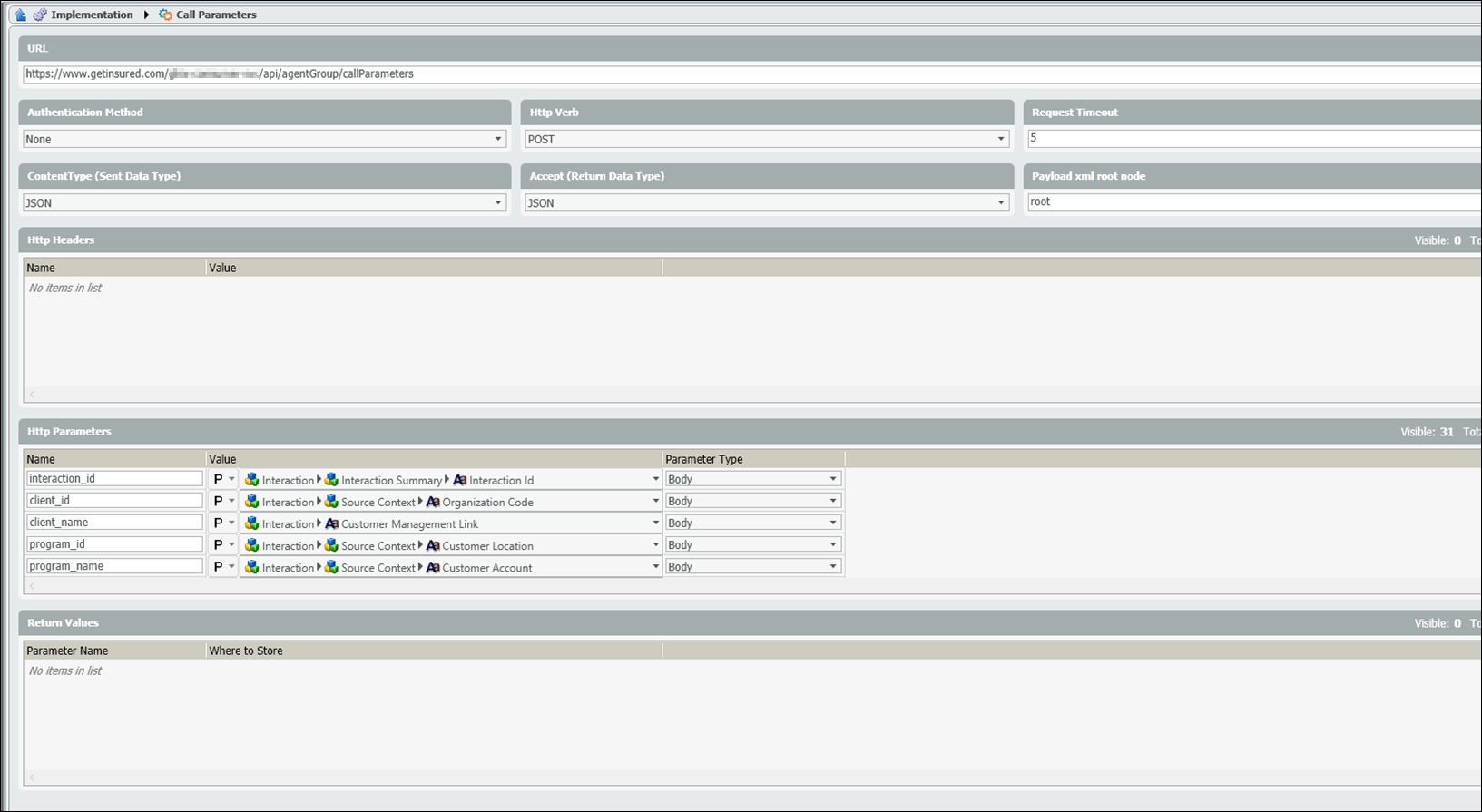Implementation: Rest API
The Rest API is used to send or retrieve data between ECS and the customers business application. Once a REST API Data container has been created it can be activated from the API Trigger tab within the Implementation subsystem or activated using the Get External Data via REST API activity in the Interaction Handling Flow.
Parameters
- URL – Customer provided URL and destination for the data
- Authentication Method – Currently not a supported feature of the Rest API
- HTTP Verb – Supports GET, POST, PUT, PATCH, DELETE, TRACE, HEAD, OPTIONS (see table below for details)
- Request Timeout – Specify the amount of time to wait for a response before assuming it failed and follows the FAULT leg of the Get External Data by Rest API node
- Content Type (Sent Data Type) – Supports JSON or XML data types
- Accept (Return Data Type) – Supports JSON, Text, or XML data types. The returning data must be formatted in a flat structure that includes simple key/value pairs. Returning data in arrays or a hierarchy of objects is not supported. JSON must be formatted as an Object.
- Payload XML Root Node – The text string that denotes the name of the initial XML node content in the GET or POST
- HTTP Headers – The HTTP headers that will be sent with each API call
- HTTP Parameters – The data that will be sent to the API including the Name and the Value from the Interaction or Business Process. Parameter Type options include Body or URL Parameter. When using URL Parameter, Content Type will not apply.
- Return Values – When retrieving data, the Parameter Name and the Field or Variable where that data will be stored
When passing data to an external system via the API Trigger, the following document details all the REST API data elements available.

